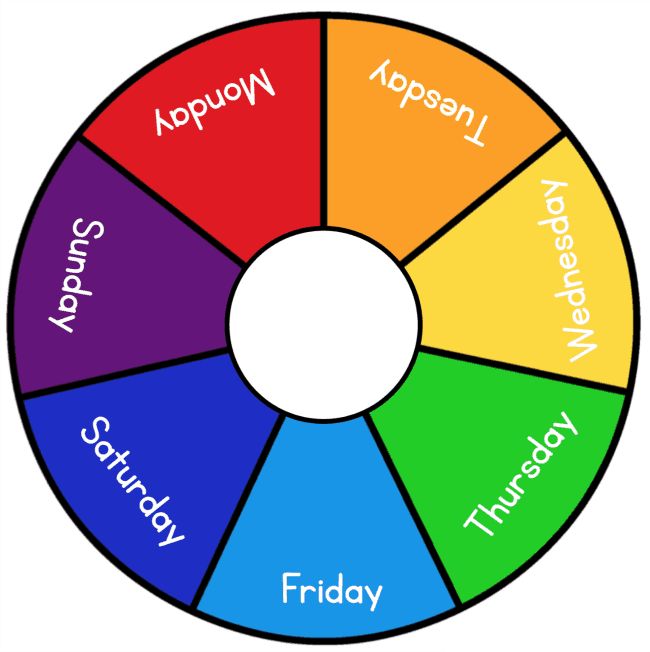Color Secrets: 5 Quick Tips

In the world of design and visual communication, color plays a crucial and often underestimated role. From the vibrant hues that capture our attention to the subtle shades that evoke specific emotions, color is a powerful tool with the ability to influence our perceptions and decisions. In this article, we delve into the secrets of color, offering you a comprehensive guide to harnessing its power effectively.
The Language of Color: Unlocking Its Potential

Color is not merely a decorative element; it is a language that communicates on a subconscious level. Every shade, tint, and tone carries a unique message, and understanding this language is essential for creating impactful designs and conveying the right emotions to your audience.
Tip 1: Know Your Color Theory
The foundation of color expertise lies in color theory. This discipline explores the visual effects and relationships between colors. By understanding the color wheel, primary, secondary, and tertiary colors, you can create harmonious color schemes that resonate with your audience.
For instance, the complementary color scheme, where colors opposite each other on the wheel create a vibrant contrast, is a popular choice for designs aiming to make a bold statement. On the other hand, analogous colors, which are adjacent on the wheel, offer a more soothing and harmonious feel.
| Color Scheme | Description |
|---|---|
| Monochromatic | Varying tones of a single color for a refined look. |
| Complementary | Contrasting colors for high-impact designs. |
| Analogous | Adjacent colors for a harmonious and soothing effect. |

Tip 2: Consider Cultural and Emotional Associations
Colors carry cultural and emotional connotations that can significantly influence how your design is perceived. For example, in many Western cultures, the color red is associated with passion, energy, and sometimes danger. In contrast, green often symbolizes nature, growth, and environmental themes.
Emotional associations with colors can vary widely. For instance, blue, often considered a calming color, can evoke feelings of trust and reliability, making it a popular choice for corporate branding. On the other hand, yellow, a cheerful and vibrant color, can create a sense of optimism and joy.
Tip 3: Utilize Color Psychology in Branding
Color psychology is a powerful tool in branding and marketing. By understanding how colors influence consumer behavior, you can strategically choose colors that align with your brand’s message and target audience.
For instance, if your brand aims to convey stability and trust, incorporating shades of blue into your logo and marketing materials can be an effective strategy. Conversely, if your brand wants to exude warmth and friendliness, orange or red hues might be more suitable.
Tip 4: Consistency and Cohesion
Maintaining color consistency across all your brand’s visual assets is crucial for building recognition and trust. A cohesive color palette ensures that your brand is easily identifiable and helps establish a strong visual identity.
Create a brand style guide that outlines your color choices, including the specific shades, tints, and tones used. This guide should be shared with your design team and any external partners to ensure consistency in all your visual communications.
Tip 5: Accessibility and Readability
When choosing colors for your designs, always consider accessibility and readability. Ensure that your text has sufficient contrast with the background color to make it legible for all users, including those with visual impairments.
Tools like the WebAIM Color Contrast Checker can help you assess the accessibility of your color choices. By using these tools, you can ensure your designs are inclusive and meet the necessary accessibility standards.
Conclusion: Mastering the Art of Color

Color is a versatile and potent tool that can enhance the effectiveness of your designs and communications. By understanding color theory, cultural and emotional associations, and the principles of color psychology, you can create visually appealing and impactful designs that resonate with your audience.
Remember, color is a powerful language, and with the right understanding and application, you can unlock its full potential to elevate your designs and convey your message with clarity and impact.
How can I choose the right colors for my brand or design project?
+Start by understanding your brand’s values, target audience, and the message you want to convey. Research color associations and psychology to find colors that align with your brand’s identity. It’s often beneficial to create a mood board to visualize and experiment with different color combinations.
What is color theory, and why is it important in design?
+Color theory is a set of principles that describe the visual effects and relationships between colors. It’s important in design because it helps you create aesthetically pleasing and harmonious color combinations. By understanding color theory, you can ensure your designs are visually appealing and convey the right emotions to your audience.
How can I ensure color consistency across my brand’s visual assets?
+Create a comprehensive brand style guide that outlines your brand’s color palette, including specific RGB, CMYK, or HEX codes. Share this guide with your design team and any external partners to ensure consistent color usage in all your brand’s visual materials.



